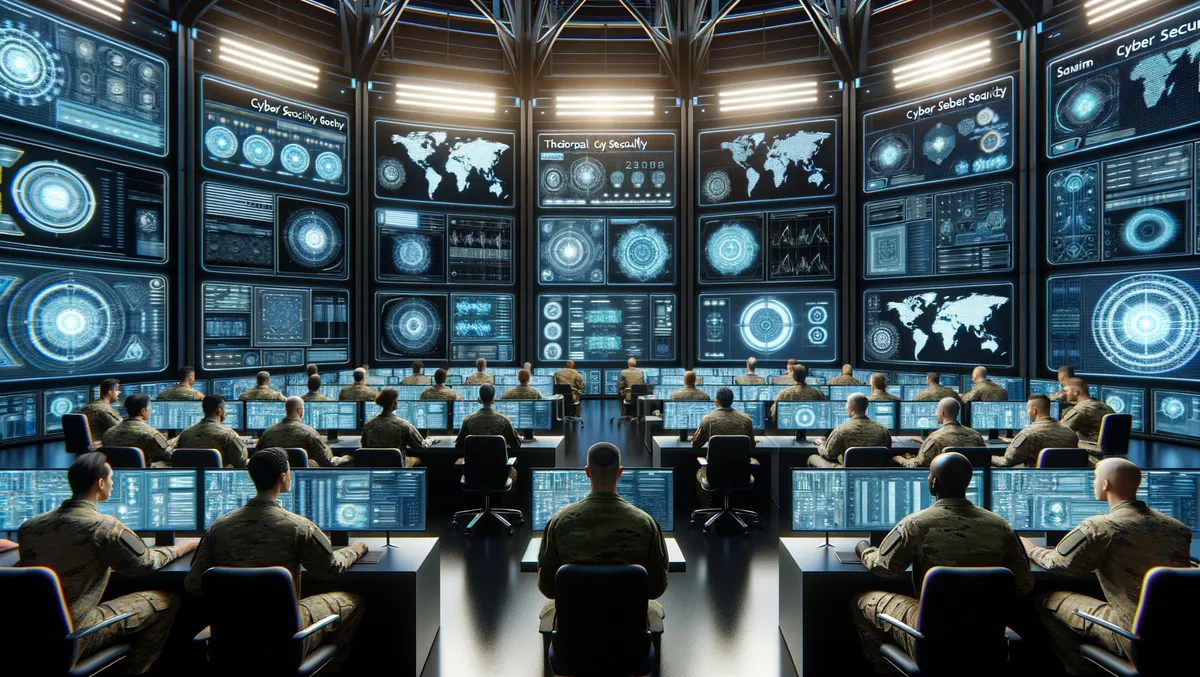
Military cyber security market to reach $7.2 billion by 2029
The Military Cyber Security market is projected to reach a substantial $7.2bn by 2029, expanding at a Compound Annual Growth Rate (CAGR) of 11% from 2021 according to figures from Adroit Market Research.
Military cyber security, alternatively known as military cybersecurity or military cyber defence, has been deployed to protect the digital assets, communication networks, and IT infrastructure of military organisations and defence agencies. The primary purpose of these processes is safeguarding vital military data to ensure the continuous execution of military actions. This includes defending military networks from malicious threats and attacks and ensuring the confidentiality, accuracy, and availability of critical military data.
These systems also incorporate procedures for the creation and usage of detection, response, and mitigation tactics for cyber incidents. These protective measures often necessitate the coordination of rapid-response actions and collaboration with cyber defence teams. An integral part of these safeguarding practices is providing military personnel with access to secure and encrypted voice and data communication networks, as well as protecting critical military infrastructure against online threats that could disrupt military operations.
Investments into military cyber security systems have been spurred by the increasingly intricate nature of cyber threats. These threats include state-sponsored cyber-attacks, hacktivism, and operations conducted by cybercriminals. As a result of the digital transformation that has broadened the potential attack surface, military organisations are required to invest in cyber security solutions that adhere to the rigorous cyber security criteria enforced by governments and defence agencies. This necessity has been met by the strategic allocation of higher defence budgets in a number of nations to handle these emerging security threats.
Increased investment has been noticed in both offensive and defensive cyber capabilities owing to the growing recognition of cyber warfare's integral role in contemporary conflict. This has been further facilitated by collaborations between defence agencies and commercial cybersecurity firms that aim to tap into pioneering technology and expertise. This collaboration has led to the enhancement of the detection and response capabilities of military cyber security solutions with advanced technology such as artificial intelligence (AI), machine learning, and threat intelligence.
In the current climate of ongoing geopolitical tensions and conflicts, cybersecurity has gained paramount importance for many countries. These circumstances have thus increased the focus on cyber capabilities, both defensive and offensive. Investments in cybersecurity measures now safeguard defence-related technology and software. It is now a top priority to protect vital military infrastructures against cyber-attacks. As a result, anticipatory measures to improve the overall resilience of military cyber defences have precipitated market expansion.
Historically, the concept of "information assurance" has gained prominence, emphasizing the value of preserving the privacy, accuracy, and accessibility of military data. Efforts towards, these were made In collaboration with agencies like the NSA (National Security Agency). During the early 2000s, military organisations proactively instigated detailed cybersecurity protocols to protect their networks.
As a response to the complex threats posed by nation-states and skilled cybercriminal organisations, the development of advanced offensive and defensive cyber capabilities have been necessitated. In response, governments and military organisations have constituted cybersecurity standards and regulatory frameworks for applications in defence and national security. In line with this, rules observance has become a major focus. Military organisations are now coordinating cyber defence measures and sharing threat intelligence with the commercial sector and their international counterparts.


